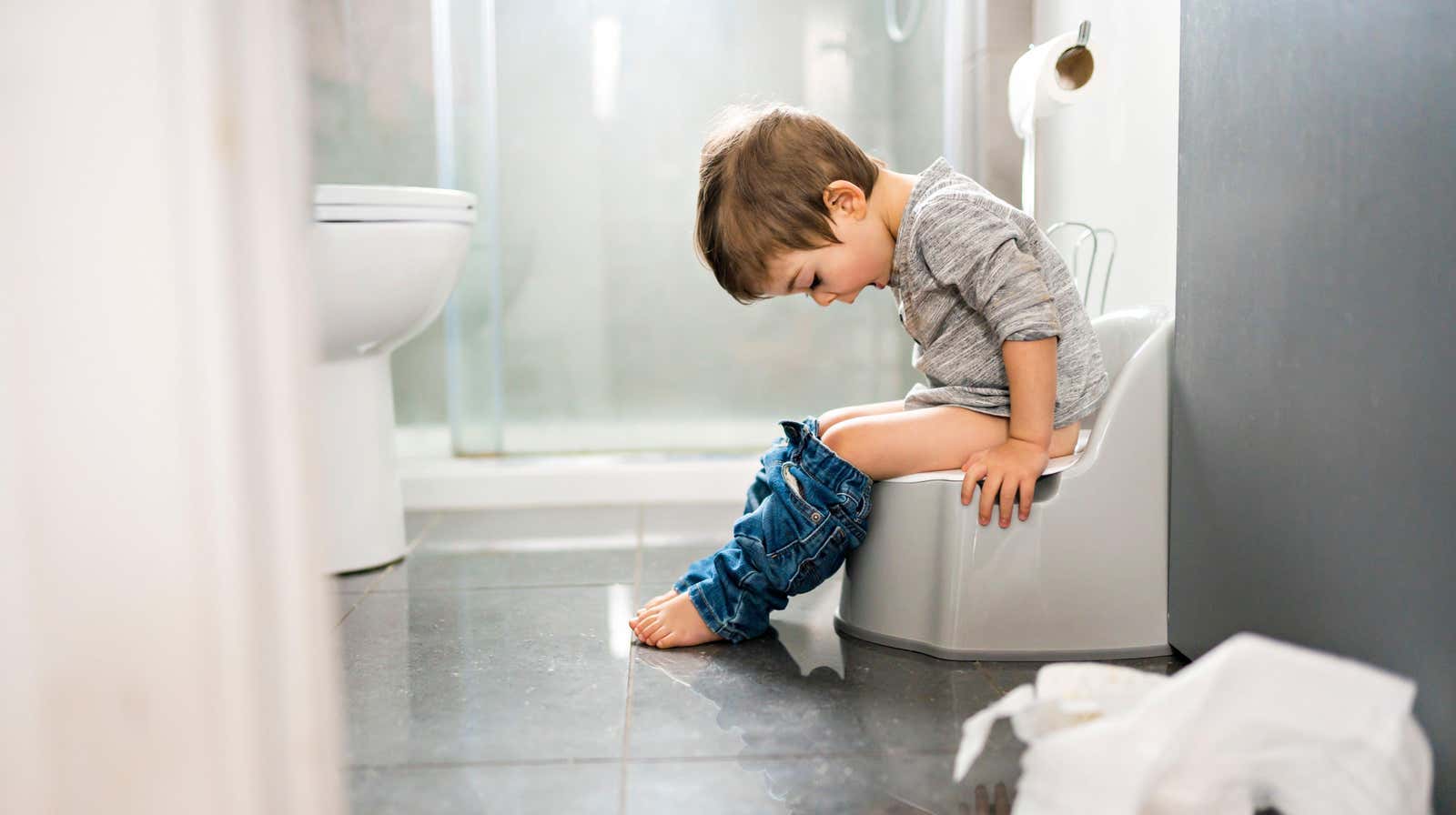How to Get Your Reluctant Toddler to Poop in the Potty

Potty training a toddler is no joke. Because of accidents and stubborn refusals, “trying” to get a toddler to do his own thing in a real toilet tends to be a long and drawn-out process, no matter what the experts promise. In particular, one problem that often arises during potty training is the categorical refusal to poop in the toilet. Also referred to as ” stool toilet rejection ” when a toddler willingly urinates into the potty, with very rare occurrences, but refuses to poop into the potty for at least one month.
“It’s pretty common,” says Francine Seltzer , a licensed psychologist and child behavior expert. In her practice, she begins to see more and more babies with this problem for a number of different reasons.
Rule out a medical problem such as constipation
In many of the families Seltzer works with, their toddlers’ refusal to poop in the potty is linked to a history of constipation, whether past or present. “When children struggle with chronic constipation, bowel movements are painful,” Seltzer said. “There are a lot of fears about defecation because the child is not sure if it will hurt or not.”
If a toddler is constipated, they often end up holding their poop out of fear that it will hurt, causing their constipation to get worse, making it more painful, making them even more afraid. This is a vicious cycle that frustrates both parents and toddlers.
For this reason, Seltzer recommends talking to a pediatrician who can recommend a course of laxatives to ease bowel movements. Seltzer also recommends not starting potty training until your baby’s stools are regular.
Anxiety can be a problem
If constipation is not the problem, there may be other concerns. As Seltzer points out, potty training is a big change. From birth, they poop and pee into the diaper whenever and wherever they need to.
“We are destroying what the child has been doing all his life,” Seltzer said. The peeing stops relatively quickly, but in order to poop, the baby needs to sit on the toilet for longer, which can cause additional anxiety, whether it be the fear of falling into the toilet or being splashed with water.
If anxiety is the problem, one way to help your little one is to break the stairs. For example, you can start by making him poop in his diaper while he’s in the bathroom, gradually moving from having him poop in the diaper standing up to having him poop in the diaper while sitting on the potty.
“Anxiety is the expectation of the unknown,” Seltzer said. “Try to break it down into manageable chunks so they have a clear idea of what the experience will be like for them.”
Another potential reason for a baby not pooping into the potty could be impatience: if your toddler is very active or impatient, he probably won’t want to sit long enough to poop into the potty.
Bribes can work, but must be strategic
Every parent who potty trains a child at some point wonders if bribes work. The answer is that yes, bribes can definitely work. If bribery works and keeps you and your child sane, then give bribes.
However, it is best to approach rewards strategically. Seltzer recommends trying natural rewards such as “after you poop, we can go play” or “after you poop, we can watch your favorite video,” as you will eventually have to stop paying bribes.
“You can’t wear M&Ms forever,” Seltzer said.